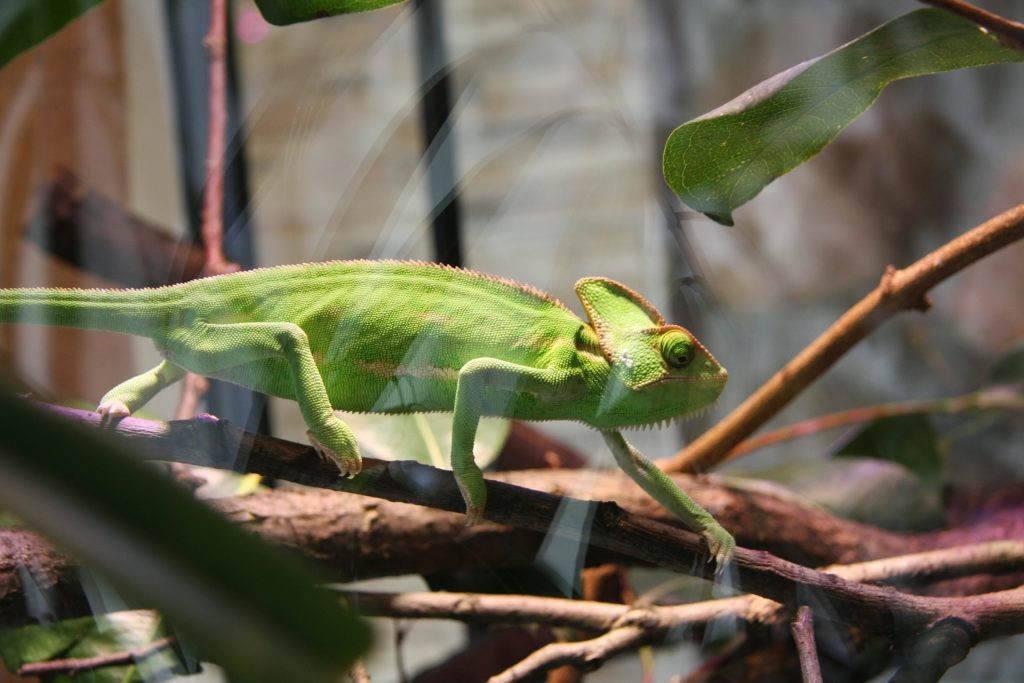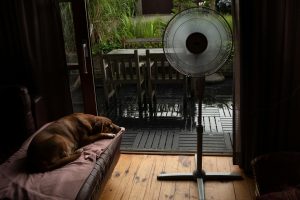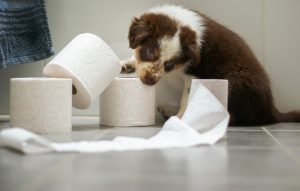
15 Brilliant Lizard Terrarium Apartment Setup Tips (Space-Saving and Low Maintenance)
Creating the perfect lizard terrarium apartment setup is all about balance — providing your reptile with the right heat, light, and humidity while keeping your living space stylish, compact, and quiet. Lizards can thrive beautifully in small apartments when their enclosures are properly designed for comfort, safety, and ease of cleaning.
Below you’ll find fifteen smart and renter-friendly ways to set up a lizard terrarium that looks great, minimizes mess, and keeps both your reptile and your home environment perfectly in sync. These tips work for geckos, bearded dragons, skinks, anoles, and most other small lizard species commonly kept as apartment pets.
1. Choose the Right Enclosure Size and Shape
The foundation of every lizard terrarium apartment setup is a correctly sized enclosure. Small reptiles like geckos and anoles can thrive in 20–30 gallon vertical terrariums, while medium species like bearded dragons or blue-tongued skinks need at least 40–75 gallons of horizontal space. Vertical tanks work best for climbers, horizontal ones for ground dwellers.
If space is tight, consider an **all-glass terrarium with a front-opening design** — easier to clean and fits neatly on shelving units or sturdy dressers. The PetMD lizard care guide breaks down habitat sizes by species and explains how to balance ventilation with humidity.
2. Pick a Quiet, Stable Spot Away from Drafts and Windows
Lizards are sensitive to vibration and sudden temperature shifts. Avoid placing their terrarium near windows, radiators, or air vents where direct sun or cool drafts can stress them. Instead, choose a **quiet interior wall** with minimal foot traffic — this keeps both your reptile calm and your apartment layout comfortable.
If your enclosure sits on a shelf or furniture, place a **rubber mat or foam pad** underneath to prevent vibrations and protect surfaces. Stable placement also prevents accidental tipping, a must for renters who want to avoid wall or floor damage. For added safety around cords or outlets, check out our pet-proof apartment tips.
3. Maintain Proper Heating and UVB Lighting Without Overheating Your Apartment
Lizards rely on external heat sources to regulate their body temperature. Use a **basking lamp and UVB bulb** to create a warm zone (85–100°F for desert species) and a cooler zone on the opposite side of the terrarium. This gradient lets your reptile thermoregulate naturally and reduces stress.
To keep your apartment comfortable, use an **adjustable thermostat** and position the setup away from direct sunlight to prevent overheating. Reflective domes help focus warmth where it’s needed, so you can use lower wattage bulbs that consume less power. Always follow the species-specific lighting guidance in PetMD’s lizard care overview.
4. Choose a Safe, Easy-to-Clean Substrate
The substrate you use can make or break your lizard terrarium apartment setup. Loose materials like sand or bark chips can be messy and pose ingestion risks for some species. Instead, opt for **reptile carpet, slate tiles, paper towels, or compressed coconut fiber** depending on humidity needs. These are hygienic, renter-friendly, and easy to replace during cleanings.
For desert dwellers like bearded dragons, flat tiles help wear down nails naturally. For tropical lizards, moist coco fiber or moss retains humidity without mold. Avoid scented or dyed substrates, which can irritate sensitive skin or respiratory systems. A clean, neutral base also makes odor control far easier in small living spaces.
5. Control Humidity with Compact Tools and Daily Checks
Different lizard species need different humidity levels, but consistency is key. Use a **digital hygrometer** to track humidity and a small **misting bottle or humidifier** to maintain balance. Desert lizards prefer 30–40% humidity, while tropical species need 60–80%. Mist lightly in the morning and evening rather than soaking the enclosure all at once.
To prevent mold or mildew in your apartment, ensure the tank’s lid has good ventilation and avoid overwatering plants or substrate. Compact humidity tools are affordable and take up almost no space—perfect for keeping your setup low-maintenance and your apartment air fresh.
6. Keep It Quiet with Mats, Pads, and Stable Stands
Vibrations and hums from heating elements or filters can bother reptiles and neighbors alike. Use a **rubber or silicone mat** beneath the terrarium and ensure it rests on a flat, solid surface to minimize noise. Avoid placing the tank on metal stands or hollow furniture that can amplify vibration.
If your lighting fixture or heat lamp rattles, tighten the clamp or add small felt pads where it contacts the glass. A calm environment helps your lizard feel secure and keeps your apartment peaceful — especially if you live above or beside others.
7. Decorate Naturally to Blend with Apartment Aesthetics
A lizard terrarium doesn’t have to clash with your décor. Choose **natural wood, stone, and plant elements** that complement your room’s colors. Minimalist branches, cork bark, and live or faux greenery create a realistic environment that doubles as décor. Natural textures also help lizards climb, hide, and thermoregulate.
Avoid cluttering the space with too many hides or ornaments — open layouts make cleaning easier and reduce odors. You can even add a soft background image (like desert sand or forest leaves) to make the tank visually soothing and cohesive with your apartment style.
8. Manage Odor and Air Quality Naturally
Reptile tanks shouldn’t smell if properly maintained. Scoop solid waste daily, replace substrate every few weeks, and keep air flowing with a small fan or open window during the day. Activated carbon pads under the lid or inside the terrarium’s filter can also neutralize mild odors.
Place a **low-light houseplant** (like a pothos or snake plant) near the enclosure to absorb humidity and freshen the air naturally. For a whole-home solution, read our pet odor-control guide for simple, renter-safe freshness strategies that work in any apartment.
9. Simplify Feeding with Easy Access and Routine
Feeding time can be stress-free with the right setup. Choose front-opening terrariums that let you reach your lizard without moving decorations or disturbing basking areas. Feed live insects in a shallow feeding dish or dedicated feeding container to prevent escapes and mess inside the enclosure.
Establish a consistent schedule—most adult lizards eat every other day—and use tongs or tweezers for safety. Keeping a feeding log helps track appetite and ensures you’re providing the right mix of protein, vegetables, and supplements. Predictability keeps your lizard calm and your routine efficient in an apartment setting.
10. Keep Cleaning Tools Compact and Separate
Maintain hygiene by keeping a small bin of “lizard-only” cleaning tools: disposable gloves, reptile-safe disinfectant, paper towels, and a scraper or sponge. Store them in a basket under your stand or in a nearby closet to make cleaning quick and organized. Avoid using household cleaners—many are toxic to reptiles.
Do spot cleanings daily and full substrate replacements monthly. Wash décor items under warm water only, and disinfect as needed. Apartment-sized terrariums benefit from short, frequent cleaning sessions that prevent buildup before it starts—saving both effort and time.
11. Regulate Light Cycles with Smart Timers
Just like turtles and fish, lizards benefit from consistent light cycles. Plug your heat and UVB lights into a **digital timer** set for 10–12 hours of daylight. This mimics natural sunlight and promotes healthy digestion, sleep, and breeding behavior.
Using smart timers also keeps your apartment cooler and saves energy when lights shut off automatically at night. Combine your setup with an energy-efficient bulb or ceramic heat emitter for steady warmth that won’t overheat small rooms.
12. Prevent Escapes with Secure Lids and Locking Mechanisms
Lizards are excellent climbers and surprisingly strong for their size. Always use a locking mesh or sliding glass lid to prevent escapes. This is especially important in apartments where an adventurous reptile could slip under furniture or near vents.
Check latches weekly to ensure they close snugly, and inspect the screen for wear or warping from heat lamps. A secure lid not only keeps your pet safe but also deters curious cats or other household animals from disturbing the enclosure. Combine this with renter-safe positioning tips from our pet-proof apartment guide for added peace of mind.
13. Create a Simple Backup Plan for Power or Equipment Failure
Heat and UVB are vital for lizards, so it’s smart to prepare for the occasional outage. Keep a **battery-powered heat pad**, a few **chemical hand warmers**, and a **portable light source** on hand. For short-term temperature drops, wrap part of the enclosure with a towel to retain warmth while leaving ventilation space.
Record your local emergency vet’s contact and keep supplies in a labeled box near the terrarium. For a full emergency prep checklist tailored to renters, visit our pet emergency preparedness guide. A few simple precautions can make all the difference in keeping your lizard safe during unexpected situations.
14. Store Supplies Efficiently to Keep Your Apartment Organized
Terrarium care doesn’t need to take over your living space. Use a **small storage bin, drawer, or rolling cart** for all lizard essentials—food, supplements, cleaning cloths, and bulbs. Label containers clearly and group similar items together to make routine care simple.
For ultra-small apartments, vertical shelving beside the enclosure works great for keeping tools handy but out of sight. Efficient organization not only saves time but also helps you maintain a clutter-free, peaceful living area around your reptile setup.
15. Add Final Touches for Comfort and Visual Appeal
The last step in your lizard terrarium apartment setup is creating a cozy, attractive environment that feels like home—for both of you. Arrange basking areas and hides to form a natural flow, ensuring your lizard can move easily between warm and cool zones. Add a subtle background image or rock backdrop to make the habitat visually appealing without adding bulk.
Finish by tidying cords, wiping glass, and adjusting the lighting angle to reduce glare. A well-balanced, thoughtfully placed terrarium becomes a living piece of décor that adds tranquility and nature’s calm to your apartment.
Final Thoughts
Building a beautiful lizard terrarium apartment setup doesn’t require a large home—just smart design and a little creativity. By focusing on clean layouts, stable heating, proper lighting, and efficient space management, you can create a thriving habitat for your reptile while keeping your apartment quiet and clutter-free.
Once everything is balanced, your lizard’s enclosure can double as both a natural retreat and a stylish conversation piece. It’s proof that even in small spaces, reptile care can be peaceful, low-maintenance, and deeply rewarding.
Lizard terrarium apartment setup guide with 15 brilliant tips for heating, lighting, humidity, and renter-friendly reptile enclosures that save space and stay quiet.
Frequently Asked Questions
What size terrarium is best for an apartment lizard?
Most small lizards, like geckos and anoles, thrive in 20–30 gallon terrariums, while medium species like bearded dragons or skinks need 40–75 gallons. Choose vertical tanks for climbers and horizontal tanks for ground dwellers to optimize space in your apartment.
How do I keep a lizard terrarium from smelling in an apartment?
Clean the enclosure regularly, remove uneaten food, and replace substrate monthly. Maintain good ventilation and avoid using scented cleaners. Activated carbon filters and nearby houseplants also help keep apartment air fresh naturally.
Can lizards live comfortably in small apartments?
Yes — with the right heating, lighting, and space-efficient setup, lizards adapt very well to apartment living. Choose compact enclosures, regulate temperatures, and keep noise minimal for both reptile comfort and tenant peace.
How do I control humidity without making my apartment damp?
Use a digital hygrometer and mist lightly once or twice a day. Good ventilation and mesh lids prevent excess moisture. If your apartment feels humid, add a small dehumidifier nearby or crack a window for air circulation.
What should I do if my heat lamp or power goes out?
Keep a backup plan ready — like a battery-powered heat pad, chemical hand warmers, or a wrapped towel for insulation. Most lizards tolerate short drops in temperature, but restoring warmth within a few hours is important for their health.

Join the Busy Pet Parent Newsletter!
Get easy routines, time-saving tips, and the latest gear reviews—delivered straight to your inbox.
Perfect for busy pet owners, apartment dwellers, and anyone who wants a happy, healthy companion (without the stress).
Exclusive guides & checklists
Product recommendations & deals
No spam—unsubscribe anytime!




